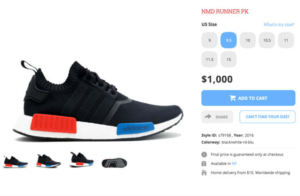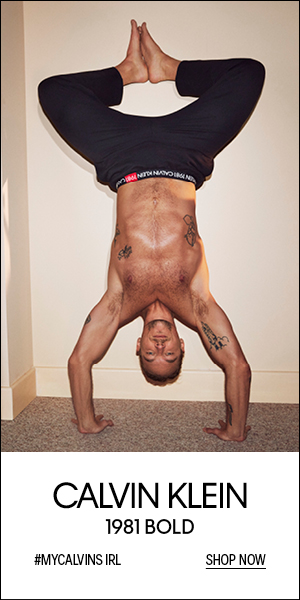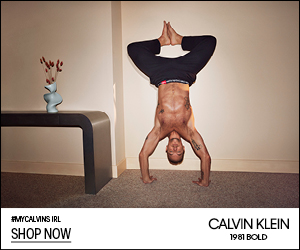FOMO has truly taken over every aspect of our lives. From secret location, limited time pop-up bars that flood your Instagram feed, to boutique music festivals that make tickets available through ballots, exclusivity and inaccessibility are essential ingredients and key elements in creating hype, whilst tapping into your utmost human desire – to simply not miss out.
This of course, has trickled it’s way into the world of streetwear. Fans of streetwear and sneakers thrive off the thrill this exclusivity provides. It’s no secret people buy sneakers for the sole purpose of re-selling them. Kids line up for hours for the highs of being able to flog their newly purchased kicks on Facebook groups for grossly inflated prices, watching mere mortals bid over their victorious cops.
How did we get to where we are?
Last year the adidas NMD was released, quickly becoming one of the world’s most coveted and sort after sneakers. Released onto the market a year after the extremely succesful Yeezy Ultraboost adidas were clearly riding on a high, ready to take the sneaker game to new levels of hype. Following a gigantic launch party in New York, the shoe sold out immediately. Each speculated colourway generated unprecedented amounts of hype, and re-sale prices reached ridiculous new levels.
It was sneaker-head hysteria at it’s most intense.
Obviously adidas are one of the most influential brands in fashion however, when the shoe was first revealed it was met with an underwhelming response. After it initially sold out just hours after release, adidas were claiming they could sell 400,000 pairs of the shoes in a day. In the kicks game, adidas are making leaping gains on Nike – they’ve transcended the realms of fashion, sport and hype in a way Nike hasn’t seemed to capitalise on.
Supreme, for example has one of the most loyal base of fans in not only streetwear, but fashion as a whole. Everything about Supreme screams exclusivity – not so much in price, however, selling a lifestyle that is only available to those willings to go to the extremes to purchase their products. Are Supreme profiting off this? No. However, the hype surrounding their brand is at an all time high, ensuring longevity and a retained relevance.
The Supreme x LV collab is the perfect and most recent example of re-sell culture gone mad. When the pop-up stores hit, line-up circumstances became so rough, Supreme’s Soho store had to cancel the drop. This created an unimaginable windfall for those lucky hypebeasts who copped in alternate cities to feed the needs of those who missed out, at even higher prices. Sneakers were initially re-selling on ebay for $3,000 and the hype-train doesn’t seem to be slowing down with every customiser in the game latching onto the iconic design.
There’s no denying social media has amplified our materialistic needs. Brands have more channels than ever before to feed the news of the exclusivity of their products than ever before, tacking onto our most innate human desires of simply not wanting to miss out. The internet has also proved the perfect breeding ground for re-sell retailers to operate as niche marketplaces.
StockX is basically the Wall Street of re-selling. The website tracks the market indexes of certain brands and allows users to place bids on shoes prior to their release to ensure buyers receive their sort-after kicks – the online marketplace has clearly capitalised on the sneaker-economy.
Other online re-sale sights include Grailed, (that you probably already frequent) and Instagram user @nikefiendin who is clearly making the re-sale game his own, taking pre-orders from around the world. There are 13 year-old moguls re-selling Supreme, and 16 year old entrepreneurs making 40% profit from sneaker re-sales. The hypebeast machine is a well-oiled beast.
The opposite of this exclusivity comes in the form of absolutely flooding the marketplace, which in itself can formulate just as much hype and greater sales. Take for example the re-launch of the Air Max 97, a hugely revived silhouette that has undoubtedly become one of the year’s most popular kicks – it can be purchased pretty much everywhere and everyone is wearing it. The exclusivity isn’t there, but, it’s still flooding social media pages intensifying your need to cop.
Will re-selling eventually die out, or will the demand get so intense it’s the only option you have? Will brands grow an intolerance for those profiting off re-sales? Or is it a game reserved only for those in a position to play…














